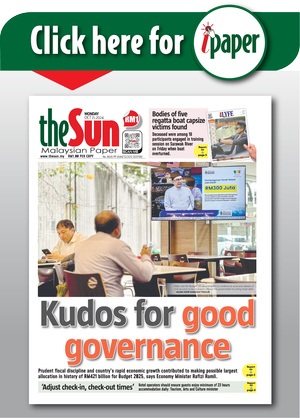SINGAPORE: Economists are split on whether Singapore’s central bank will loosen monetary policy or leave settings unchanged in its scheduled review next week as the economy remains resilient despite weakening global growth.
Of 12 analysts Reuters polled, six expect the Monetary Authority of Singapore to loosen its currency-based monetary policy at the review on July 30 to counter an expected negative output gap in the economy.
The other six expect no change in policy.
The MAS eased monetary policy twice this year in January and April on growth concerns due to US tariffs after holding settings since a tightening in October 2022. The economy, however, is posting better-than-expected results due to frontloading activity. Singapore avoided a technical recession after the economy grew 1.4% quarter-on-quarter in the second quarter, according to preliminary government data released last week.
Instead of using interest rates, Singapore manages monetary policy by letting the local dollar rise or fall against the currencies of its main trading partners within an undisclosed trading band, known as the Singapore dollar nominal effective exchange rate, or S$NEER.
It adjusts policy via three levers: the slope, mid-point and width of the policy band.
Maybank economists expect MAS to maintain policy given the improved economic outlook. The analysts also upgraded their forecast for 2025 GDP to 3.2% from 2.4%.
OCBC analyst Christopher Wong also expects the MAS to hold policy.
“Having implemented two consecutive easings in the first half of 2025 by reducing the policy slope, a pause at this juncture will allow policymakers to evaluate the effects of earlier easing measures and await greater clarity on tariff-related uncertainties,“ he said.
However, Barclays analysts think MAS will flatten the S$NEER slope.
“The MAS knows better than to celebrate any upside surprises to second quarter GDP too early: frontloading implies an eventual payback – which is likely to manifest in second half of 2025 – while the more pernicious effects of uncertainty on investment will likely also take time to show up,“ they said.
Central banks globally are taking a wait-and-see approach. The Fed is expected to hold its benchmark rate steady at its July meeting, while the European Central Bank left rates unchanged on Thursday after eight consecutive interest rate cuts. Authorities in Singapore have warned that growth is likely to slow in the second half of 2025 as frontloading activity tapers off amid global trade uncertainties.
In April, the government reduced its GDP forecast to 0% to 2% from 1% to 3%. – Reuters









